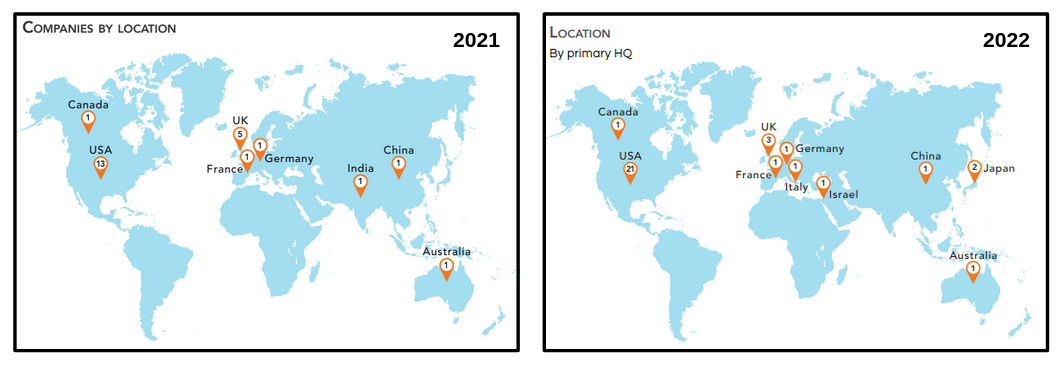
The Fusion Industry Association (FIA), a non-profit advocacy organization representing nearly 30 fusion start-ups, released its second annual report on the state of the global fusion industry this July. The report provides an update on the milestones achieved in the last year by each of 33 companies surveyed as well as an aggregated picture of growth in the industry as a whole using data collected from the companies.
Of particular note is the $2.8 billion USD growth in private fusion industry funding since the 2021 report, headlined by an investment of $1.8 billion into Commonwealth Fusion Systems by a group of investors that includes Bill Gates and Google. The report counts seven companies whose private investment now totals more than $200 million each, reflecting venture capital’s growing interest in fusion approaches that run the gamut from magnetic confinement to magneto-inertial.
“This funding,” comments FIA CEO Andrew Holland in his foreword of the report, “will allow fusion companies to push toward their ‘Kitty Hawk moment’ in the coming years. From there, companies will rapidly build the pilot plants that will prove fusion energy is ready for the marketplace.”
Holland’s confidence, the report shows, is not misguided, as 93% of companies stated that they believe fusion power would deliver electricity to the grid by the end of the 2030s. It’s a confidence that’s been growing year-over-year, evidenced by the 139% increase in funding reported since last year.
As the industry has grown in size, so too has it grown in technical variety. Of the companies surveyed, no more than four are building the same type of fusion machine, and the group boasts over 20 distinct approaches to solving the fusion puzzle.

The report also points out one particular facet of the fusion industry in which growth has been anything but rapid – the diversity of the fusion workforce. Though a small increase was observed from 2021 to 2022 in the self-reported number of women working in fusion startups, they still represent less than a quarter of the workforce.
Holland expresses optimism in his foreword about new programs to increase opportunities for women in the fusion industry, such as the Women in Fusion program which launched earlier this year. “This is important because a diverse workforce both ensures that the benefits of fusion are widely shared and because a workforce that reflects broader society brings real benefits in decision making to the industry.”
To read the report in its entirety or learn more about the Fusion Industry Association, check out their website.
